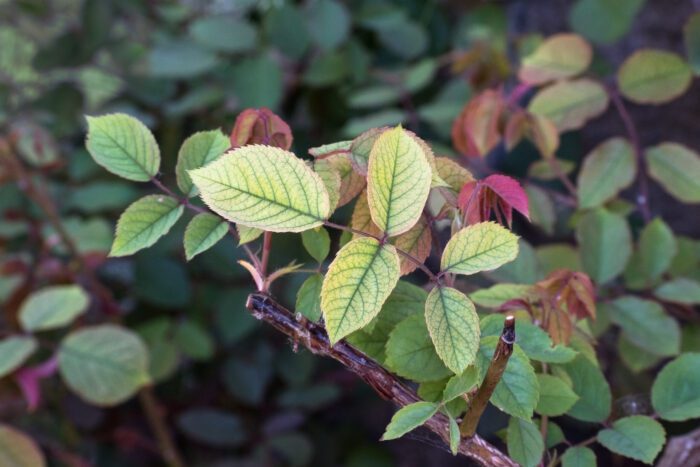Function
Taken up as ionic Mg2+ Magnesium is essential for chlorophyll and sugar formation, playing a central role in maintaining green leaf area and photosynthesis. In addition, Magnesium is vital for activating enzymes that promote growth and stimulate immune system responses.

Magnesium nutrient deficiency recognizable by chlorosis of interveinal areas
Function
Magnesium promotes canopy and fruit development, sugar formation and the uptake of major nutrients, particularly Nitrogen and Potassium. Magnesium nutrient deficiency results in poor nutrient recovery, low growth rates, increased biotic stress and early senescence.
Symptoms
Magnesium nutrient deficiency affects older leaves first. The main veins on the leaf remain dark green, while the inter-veinal leaf area goes uniform pale green to yellow, eventually becoming brown and necrotic.

Late season symptoms of magnesium nutrient deficiency in grape. Source: APS Digital Image Collections.
Significance
Magnesium stress can affect plant uptake of Nitrogen and Potassium, leading to early maturity and poor development of fruit, with low sugar content. In addition, plant defence and disease resistance can be restricted. Magnesium nutrient deficiency is often worse in compacted or alkaline soils, during hot, dry growing conditions and when crops are fed high levels of Nitrogen-Potassium fertiliser.
Actions
Check soil status and correct if necessary. Foliar fertilizer treatment as soon as symptoms appear can be very effective. Routine applications of foliar Magnesium can improve the later stages of yield building and quality forming.

Any questions? Please get in touch